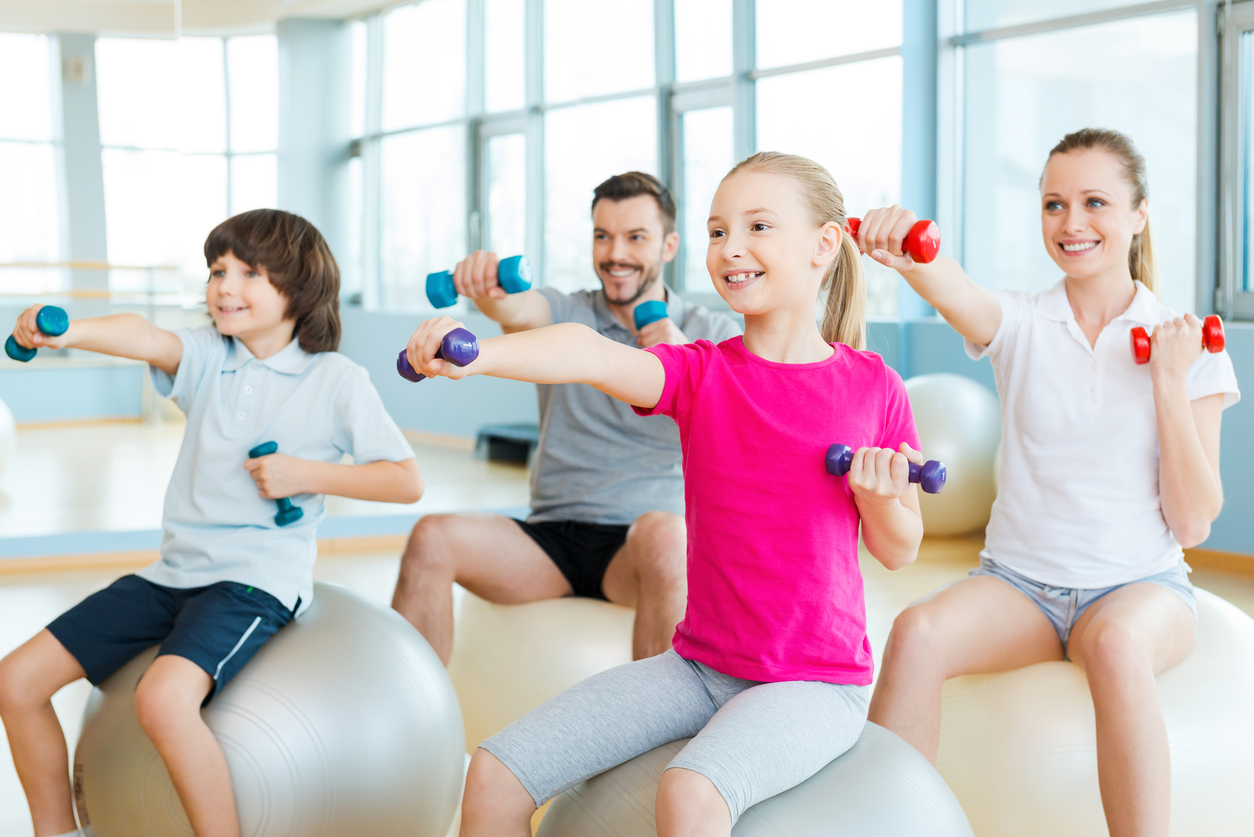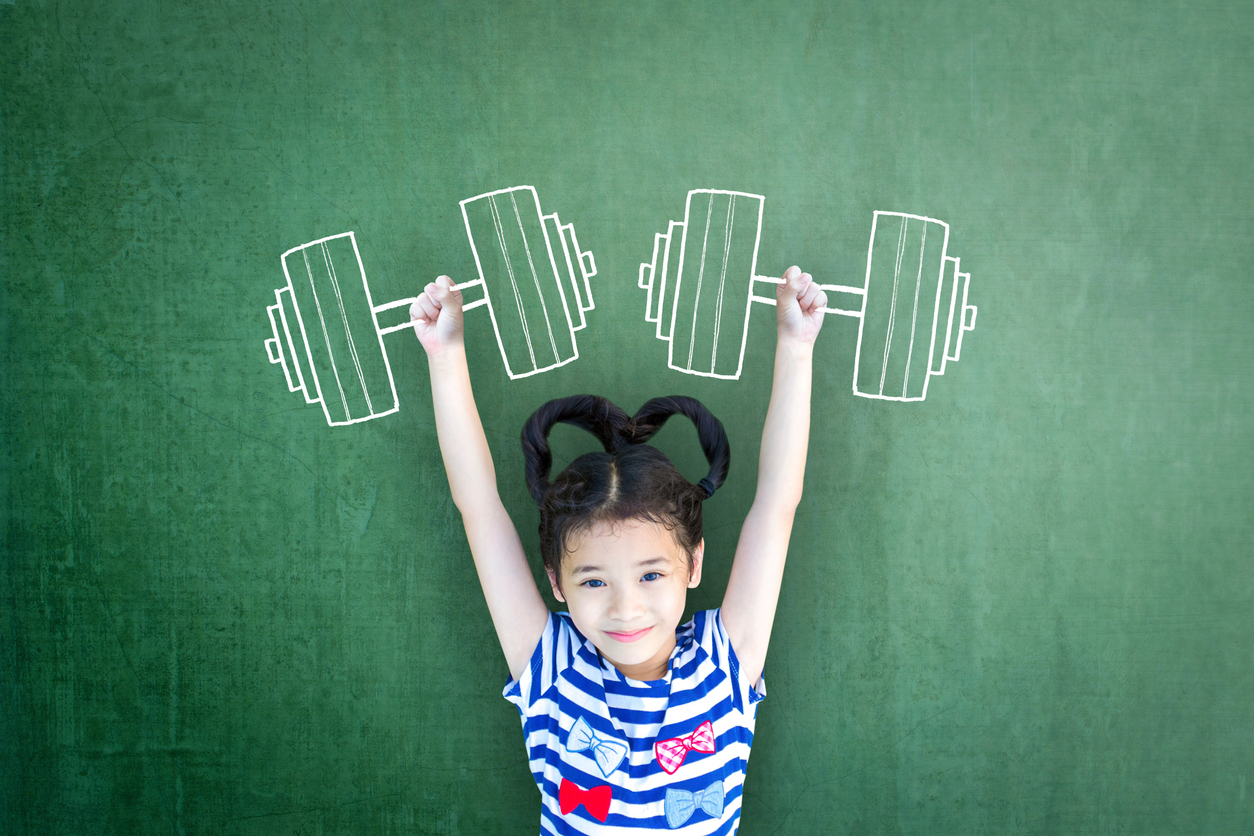~ Youth Fitness Expert Mike Hanik, Co-founder www.FamilyTimeFitness.com
I have many different roles in my life. In these different roles I interact with parents, children, and young adults. I teach health and physical education classes at a large state university. I coach my children’s sports teams. I oversee and lead games for the Awana program at my church. I am the director of a summer camp. At home, I am a husband and dad. My roles at home are the most important and biggest responsibilities that I have. I feel it is critical to create an environment in the home that provides our children with the best opportunities to grow to be healthy, happy, independent adults. We are role models to our children. Our behaviors, words, and actions have a deep impact on our children.
Many of us homeschool so we can raise our children in a way that is consistent with our values. Our children may have chores they must complete. We teach our children manners and respect. We have our children help keep the house reasonably clean and in order. We set reasonable limits on daily media use. We do many positive things to create a healthy home environment but we are still concerned that we aren’t doing enough to raise healthy children. One area of the home environment that is often overlooked is the amount of daily physical activity we participate in.
According to the Centers for Disease Control and Prevention 55% of adults never engage in vigorous leisure time physical activity. Only 31% of men and 25% of women engage in leisure time physical activity lasting longer than 10 minutes three or more times per week. The lack of physical activity is seen by our children and they model similar behaviors. In another survey, the Centers for Disease Control and Prevention found that 61.5% of 9-13 year olds do not participate in physical activity during nonschool hours and that 22.6% do not engage in any free-time physical activity.
This lack of regular physical activity has led to the dramatic increase in childhood obesity and type 2 diabetes. Over one third of children in the United States are considered overweight or obese. The rates of childhood obesity have tripled in the last 30 years. Much of the increase is linked to a lack of physical activity. Our children are not getting very much physical activity outside the home so if we do not lead by example and strongly encourage our children to be active then we are responsible for the negative outcomes in our children’s lives. In astudy that examined how children perceived their quality of life the research found that obese children rated their quality of life on par with young cancer patients undergoing chemotherapy. The mental and emotional effects of childhood obesity are heartbreaking. This is in addition to the physical consequences of being overweight or obese.
Incorporating at least 30 minutes of daily physical activity significantly reduces the risk of being overweight or obese and all the other related conditions. Being physically active makes our hearts healthier, helps control weight, reduces the risk of type 2 diabetes and some types of cancer, and improves psychological health.
Commit to 30 minutes a day
Parents, we need to commit to at least 30 minutes of moderate to vigorous daily physical activity. This could be in the morning before starting school work or when dad comes home from work. I usually leave for work early so I like to spend time with my kids after work. Instead of going to a gym, I go home and play with my kids. There may be days I am tired after work but my kids will get me outside and within 5 or 10 minutes of physical activity I am feeling much better. I really enjoy this time with my kids. Sometimes just one or two of my children will want to play but usually within a few minutes all of my kids and some of the neighbor kids are over playing with us. We may ride our bikes, play tag, jump rope, throw and catch or make up some game. If my kids are playing a particular sport, we practice those skills. One great benefit to playing with my kids is that they share other things that happened during the day. Not only do we get our physical activity but my kids share their lives with me. These are great times to teach life lessons or talk about life issues. Find a time that works best for your family and commit to it. Hold each other accountable to getting out and moving for at least 30 minutes a day. It is much easier when it is done together as a family.
Designate a Space
Designate a space or a couple of areas in or around your home for physical activity. We live in Texas so we can do things outside for most of the year. We use our front yard and back yard as play spaces. If the weather is not great, we use a space in our house. When we are indoors, we have to be a little creative but we can have a lot of fun and get a lot of exercise in a small amount of space. We do things like a standing broad jump. We jump off two feet and land on two feet, or jump off one foot and land on both feet or one foot. We measure the distance we jump and try to do better. We crawl around the house or pass a foam ball back and forth. Find a space and make sure it is safe for moving around. When indoors, make sure there is enough clear floor space to safely perform the activities. Make sure all toys and other objects are moved out of the way before starting.
Have Fun
Find fun physical activities that you can do as a family. Having fun is critical to incorporating physical activity into our lifestyle. If physical activity is not fun it is not going to happen. Have a variety of options to keep everyone interested. You can do a lot at home without having to spend large amounts of money on equipment. My kids like to play tag so we play several different versions of tag. We play catch, or kickball. We have used a large foam ball and stick to play baseball in the front yard. The foam ball does not travel very far when it is hit and even my youngest daughter (six years old) has success when hitting the ball since it is bigger and travels slower. We use shoes or something else to mark the bases. If we want to get away from the house we ride our bikes or walk to the park and play there. The point is to keep the activities fun and encouraging in order to keep everyone engaged.
Home is Best
I truly believe the home is where children learn best. This is especially true for physical activity. The home is a safe environment. There is little or no performance pressure. There is no peer pressure. These are very important factors when children are exploring and learning new movements.
One observation from my work as a coach and teacher is that children love to move. They want to run, play and have fun. When children are free to move, they want to explore a variety of movement patterns. In my classes, I have the children walk, run, skip, hop, crawl, and jump. In every group, there are children who resist doing these movements. They resist because they know they cannot do the movement well. Even at 5 years old, children do not want to try new movements in front of their peers. I tell them it is a safe place to explore different movements but they still feel some anxiety to perform in front of their friends. I encourage children and parents to practice these movements at home. Children feel safe at home. There is no one there to laugh at them or make fun of them. They do not have the internal performance anxiety. The stress is less so they can freely explore movement.
Learning and mastering a wide variety of movement skills is important for every person’s development. These movements develop strength, mobility, flexibility, coordination, body awareness, and spatial awareness. Mastering movement skills reduces the risk of injury and also builds confidence which leads to happy and healthier children.
If you want more physical activity for you and family, I encourage you to commit to at least 30 minutes of moderate to vigorous daily physical activity for the next 30 days. Keep a journal to track what you do and how you feel. Observe the differences in your children’s behaviors and activity levels. If you complete the 30 day challenge my hope is that you feel better, you are stronger, do not tire as quickly and have reduced some stress.
If you and your family have not done much physical activity, you may want to consult a physician before starting an exercise program. Take breaks during activity sessions when you need them. Drink water to stay hydrated. You may experience some muscle soreness. This is normal. It is your body’s way of telling you that it is adapting and getting used to the new stress. The muscle soreness should subside in a few days.
Adding physical activity to your daily routines is one way to make a positive change to your home environment. Encourage each other and have fun.
Youth Fitness Expert Mike Hanik, co-founder Family Time Fitness 1-979-209-0778


